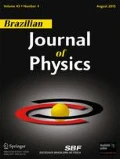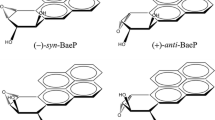Abstract
Based on the diagonalization of an effective Hamiltonian, we investigate the role of electronic correlation on the aromatic behavior of polycyclic aromatic hydrocarbons (PAHs). We show that for benzene and several examples of PAHs, a singular change in the electronic distribution happens at a relatively narrow range of the Coulomb interaction strength; in each case, the CC bond distribution pattern agrees with the known chemical behavior of the corresponding compound. We explore the link between electronic correlation and information entropy and show that several signatures of fluctuations in the one-particle entropy occur at the same range of values of the Coulomb parameter that correspond to a realistic bond-order distribution of the PAHs. These results indicate that the singular stability of the electronic distribution of aromatic compounds is associated with an optimum range of correlation effects, which can be understood in terms of the entanglement of the two sub-lattices of alternating carbon atoms and the presence of a localization transition of the overall electronic density.








Similar content being viewed by others
References
D.J. Watts, S.H. Strogatz, Collective dynamics of /‘small-world/’ networks. Nature 393(6684), 440–442 (1998)
R. Albert, A.-L. Barabási, Statistical mechanics of complex networks. Rev. Mod. Phys. 74(1), 47–97 (2002)
L. Gong, P. Tong, von Neumann entropy and localization-delocalization transition of electron states in quantum small-world networks. Phys. Rev. E Stat. Nonlinear Soft Matter Phys. 74(5 Pt 2), 056103 (2006)
K. Ohno, Some remarks on the Pariser-Parr-Pople method. Theor. Chim. Acta 2(3), 219–227 (1964)
J. Hubbard, Electron correlations in narrow energy bands. Proc R Soc Lond A 276(1365), 238–257 (1963)
E. Clar, Polycyclic Hydrocarbons (Academic Press, London, 1964)
Leach, S., Physical and chemical properties of polycyclic aromatic hydrocarbons, in Interstellar Dust: Proceedings of the 135th Symposium of the International Astronomical Union, Held in Santa Clara, California, July 26–30, 1988, L.J. Allamandola and A.G.G.M. Tielens, Editors. Springer Netherlands: Dordrecht. p. 155–171, (1989)
J.E. Anthony, Functionalized acenes and heteroacenes for organic electronics. Chem. Rev. 106(12), 5028–5048 (2006)
S. Fujii, T. Enoki, Nanographene and graphene edges: electronic structure and nanofabrication. Acc. Chem. Res. 46(10), 2202–2210 (2013)
H.F. Bettinger, Electronic structure of higher acenes and polyacene: the perspective developed by theoretical analyses. Pure Appl. Chem. 82(4), 905–915 (2010)
C.E. Bostrom et al., Cancer risk assessment, indicators, and guidelines for polycyclic aromatic hydrocarbons in the ambient air. Environ. Health Perspect. 110(Suppl 3), 451–488 (2002)
F.J. Lovas et al., Interstellar chemistry: a strategy for detecting polycyclic aromatic hydrocarbons in space. J. Am. Chem. Soc. 127(12), 4345–4349 (2005)
P. Rivero, C.A. Jimenez-Hoyos, G.E. Scuseria, Entanglement and polyradical character of polycyclic aromatic hydrocarbons predicted by projected Hartree-Fock theory. J. Phys. Chem. B 117(42), 12750–12758 (2013)
E.R. Gagliano et al., Correlation-functions of the antiferromagnetic Heisenberg model using a modified Lanczos method. Phys. Rev. B 34(3), 1677–1682 (1986)
Y.C. Chen, H.Q. Lin, Phase separation in the one-dimensional t-V model. Phys C, Supercond 282-287, 1871–1872 (1997)
T. Giamarchi, Quantum Physics in One Dimension. The International Series of Monographs on Physics, vol 121 (Oxford University Press, Oxford, 2004)
S. Marcin, B. Evgeni, The generalized t-V model in one dimension. J. Phys. Conf. Ser. 592(1), 012057 (2015)
A.T. Balaban et al., Correlations between local aromaticity indices of bipartite conjugated hydrocarbons. J. Phys. Chem. A 114(18), 5870–5877 (2010)
Eaton, J.W. et al., GNU Octave version 3.8.1 manual: a high-level interactive language for numerical computations (CreateSpace Independent Publishing Platform, 2014)
R. Mondaini, M. Rigol, Many-body localization and thermalization in disordered Hubbard chains. Phys. Rev. A 92(4), 041601 (2015)
A. Shurki et al., How valence bond theory can help you understand your (bio)chemical reaction. Chem. Soc. Rev. 44(5), 1037–1052 (2015)
Z. Rashid, J.H. van Lenthe, Generation of Kekule valence structures and the corresponding valence bond wave function. J. Comput. Chem. 32(4), 696–708 (2011)
P.W. Fowler et al., Perimeter ring currents in benzenoids from Pauling bond orders. Phys. Chem. Chem. Phys. 18(17), 11756–11764 (2016)
M. Sola, Forty years of Clar’s aromatic pi-sextet rule. Front Chem 1(22), 22 (2013)
P.C. Hiberty, G. Ohanessian, F. Delbecq, The valence-bond description of conjugated molecules. 40. Theoretical study of the Mills-Nixon effect, a phenomenon of .pi.-bond localization in small ring annelated aromatics. J. Am. Chem. Soc. 107(11), 3095–3100 (1985)
D.M. Collins, Entropy maximizations on electron density. Z Naturforsch A 48(1–2), 68–74 (1993)
R.O. Esquivel et al., Physical interpretation of information entropy: numerical evidence of the Collins conjecture. Phys. Rev. A 54(1), 259–265 (1996)
J.C. Ramírez et al., Jaynes information entropy of small molecules: numerical evidence of the Collins conjecture. Phys. Rev. A 56(6), 4477–4482 (1997)
E.T. Jaynes, R.D. Rosenkrantz, E.T. Jaynes : papers on probability, statistics, and statistical physics. (Reidel, Dordrecht, 1983)
R.P. Sagar et al., Relationships between Jaynes entropy of the one-particle density matrix and Shannon entropy of the electron densities. J. Chem. Phys. 116(21), 9213–9221 (2002)
Á. Nagy, Shannon entropy density as a descriptor of Coulomb systems. Chem. Phys. Lett. 556, 355–358 (2013)
N. Flores-Gallegos, Informational energy as a measure of electron correlation. Chem. Phys. Lett. 666, 62–67 (2016)
S. Bera et al., Many-body localization characterized from a one-particle perspective. Phys. Rev. Lett. 115(4), 046603 (2015)
J.C. Ramírez et al., Amount of information present in the one-particle density matrix and the charge density. Phys. Rev. A 58(5), 3507–3515 (1998)
J.A. Kjall, J.H. Bardarson, F. Pollmann, Many-body localization in a disordered quantum Ising chain. Phys. Rev. Lett. 113(10), 107204 (2014)
J. Gemmer et al., Quantum Thermodynamics: Emergence of Thermodynamic Behavior Within Composite Quantum Systems, in Lect. Notes in Phys. vol 784 (Springer, Heidelberg, 2009)
M.-H. Chung, D.P. Landau, Von Neumann entropy and bipartite number fluctuation in quantum phase transitions. Phys. Rev. B 83(11), 113104 (2011)
G. Vidal et al., Entanglement in quantum critical phenomena. Phys. Rev. Lett. 90(22), 227902 (2003)
Y. Chen et al., Sublattice entanglement and quantum phase transitions in antiferromagnetic spin chains. New J. Phys. 8(6), 97–97 (2006)
A. Kitaev, J. Preskill, Topological entanglement entropy. Phys. Rev. Lett. 96(11), 110404 (2006)
A. Hamma et al., Entanglement, fidelity, and topological entropy in a quantum phase transition to topological order. Phys. Rev. B 77(15), 155111 (2008)
S. Szalay et al., The correlation theory of the chemical bond. Sci Rep 7(1), 2237 (2017)
R.F. Nalewajski, E. Broniatowska, Entropy displacement and information distance analysis of electron distributions in molecules and their Hirshfeld atoms. J. Phys. Chem. A 107(32), 6270–6280 (2003)
R.F. Nalewajski, Information Theory of Molecular Systems, vol xviii, 1st edn. (Elsevier, Amsterdam, 2006) 443 p
K. Boguslawski et al., Entanglement measures for single- and multireference correlation effects. J. Phys. Chem. Lett. 3(21), 3129–3135 (2012)
K. Boguslawski et al., Orbital entanglement in bond-formation processes. J. Chem. Theory Comput. 9(7), 2959–2973 (2013)
N. Flores-Gallegos, Generalized Shannon’s entropy as generator of local density functionals. Chem. Phys. Lett. 676, 1–5 (2017)
L. Delle Site, Shannon entropy and many-electron correlations: theoretical concepts, numerical results, and Collins conjecture. Int. J. Quantum Chem. 115(19), 1396–1404 (2015)
Acknowledgments
We thank Professor A. M. Macedo for very helpful discussions along this work. We acknowledge the financial support from CNPq and INFO National Institute. R. A. M. was the recipient of CNPq graduate fellowship.
Author information
Authors and Affiliations
Corresponding author
Rights and permissions
About this article
Cite this article
Moreira, R.A., de Melo, C.P. Entanglement and Electronic Correlation in Polycyclic Aromatic Molecules. Braz J Phys 47, 575–582 (2017). https://doi.org/10.1007/s13538-017-0535-7
Received:
Published:
Issue Date:
DOI: https://doi.org/10.1007/s13538-017-0535-7




